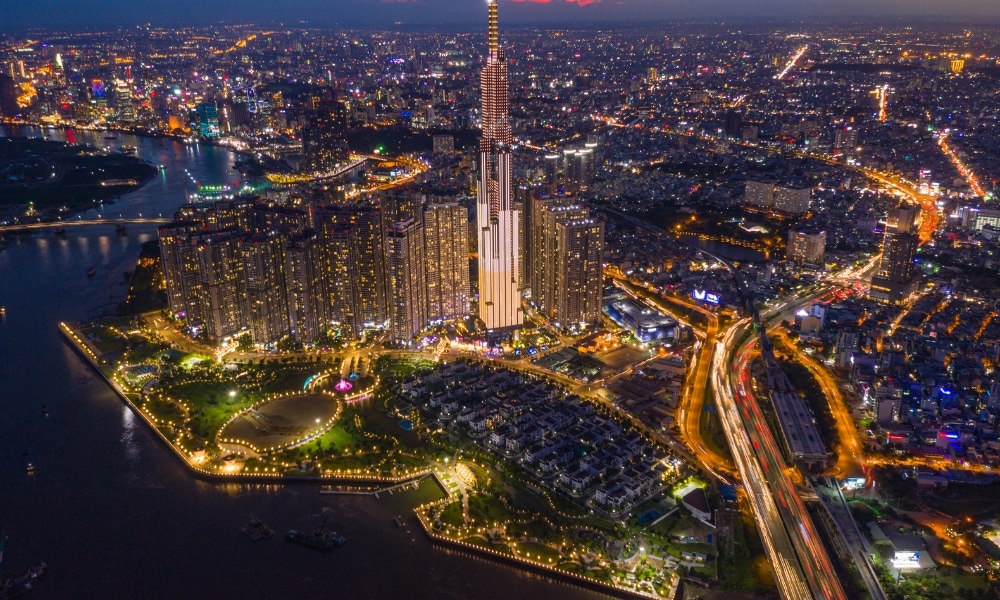Vietnam has rapidly emerged as one of the most attractive destinations for foreign investment in Asia. With a robust economic growth rate, strategic trade policies, and a young, skilled workforce, the country offers abundant opportunities for global investors. This article explores why Vietnam is a top destination for foreign investment and how it continues to solidify its position on the global stage.
1. Strategic Location in Southeast Asia
- Geographical Advantage:
- Vietnam is strategically located in Southeast Asia, making it a hub for trade routes connecting Asia, Europe, and the Americas.
- Proximity to major markets like China, India, and ASEAN nations enhances its logistical appeal.
- Access to Global Supply Chains:
- Vietnam’s well-connected ports and improving infrastructure position it as a key player in regional and global supply chains.
2. Economic Stability and Growth
- Strong GDP Growth:
- Vietnam consistently maintains one of the highest GDP growth rates in the region, with growth often exceeding 6% annually.
- Diversified Economy:
- Key sectors driving the economy include manufacturing, agriculture, services, and technology, providing diverse investment opportunities.
3. Favorable Trade Agreements
- Comprehensive Partnerships:
- Vietnam is part of numerous trade agreements, including:
- Comprehensive and Progressive Agreement for Trans-Pacific Partnership (CPTPP).
- Regional Comprehensive Economic Partnership (RCEP).
- Free Trade Agreement with the European Union (EVFTA).
- Vietnam is part of numerous trade agreements, including:
- Impact:
- These agreements reduce tariffs, enhance market access, and strengthen Vietnam’s position in global trade networks.
4. Competitive Labor Market
- Skilled and Young Workforce:
- Over 60% of Vietnam’s population is under 35, providing a young, dynamic, and adaptable workforce.
- Increasing investment in education and vocational training is enhancing workforce skills.
- Affordable Labor Costs:
- Vietnam offers a competitive edge with lower labor costs compared to neighboring countries like China and Thailand.
5. Manufacturing Powerhouse
- Shift from China:
- Vietnam has become a popular alternative to China for manufacturing due to rising costs and geopolitical tensions in the latter.
- Industries Driving Growth:
- Electronics, textiles, and footwear dominate Vietnam’s manufacturing sector.
- Major companies like Samsung, Nike, and Intel have established significant operations in Vietnam.
6. Supportive Government Policies
- Investment Incentives:
- The government offers incentives such as tax breaks, land use rights, and streamlined administrative processes to attract foreign direct investment (FDI).
- Economic Zones:
- Special Economic Zones (SEZs) and Industrial Parks provide additional benefits, such as reduced tariffs and improved infrastructure.
7. Growing Domestic Market
- Rising Middle Class:
- Vietnam’s expanding middle class drives demand for consumer goods, services, and technology.
- Urbanization:
- Rapid urbanization creates opportunities in real estate, retail, and infrastructure development.
8. Focus on Digital Transformation
- Tech-Friendly Environment:
- Vietnam is embracing Industry 4.0, with investments in artificial intelligence, blockchain, and e-commerce.
- Startup Ecosystem:
- Government initiatives like Vietnam Silicon Valley are nurturing a vibrant startup ecosystem.
Challenges to Consider
- Infrastructure Gaps:
- While improving, some areas still face challenges in transportation, energy, and logistics.
- Regulatory Complexity:
- Navigating legal and bureaucratic procedures can be challenging for foreign businesses.
- Environmental Concerns:
- Balancing industrial growth with sustainable practices is an ongoing challenge.
Future Prospects for Foreign Investment in Vietnam
- Continued Trade Integration:
- New trade agreements and partnerships will enhance Vietnam’s attractiveness to global investors.
- Infrastructure Development:
- Massive investments in transportation and energy infrastructure are expected to improve connectivity and efficiency.
- Green Investments:
- Opportunities in renewable energy, sustainable manufacturing, and eco-friendly technologies are expanding as Vietnam prioritizes sustainability.
Vietnam’s strategic location, robust economic policies, competitive labor market, and commitment to trade integration make it a top destination for foreign investment. While challenges remain, the country’s proactive approach to reform and development ensures that it remains a key player in the global investment landscape. For investors seeking growth, Vietnam offers unparalleled opportunities across diverse sectors.
Topics:






